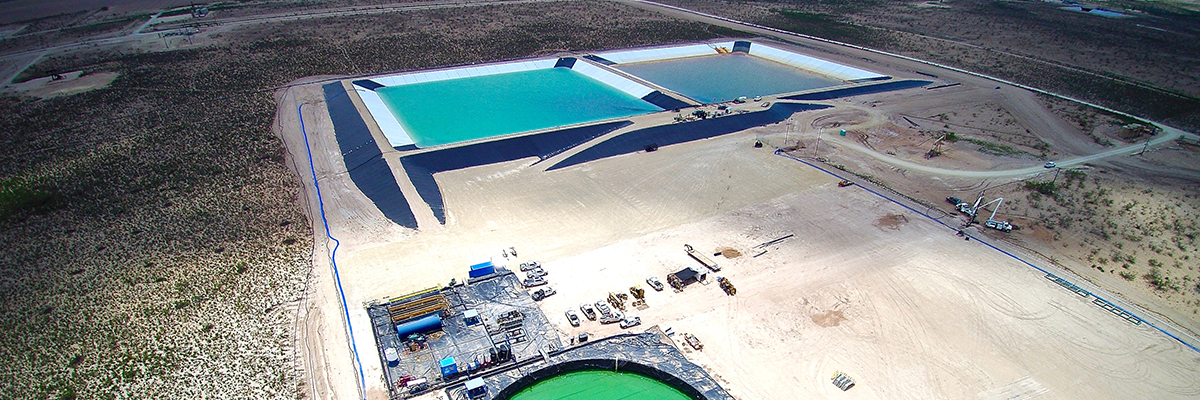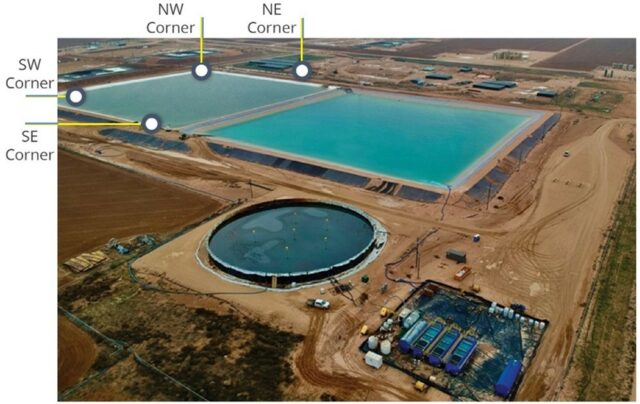Safeguarding Your Frac-Water With TETRA Water Storage Management
By Matt Cappers | Director of Operations for Water Treatment | May 17th, 2021

Water Treatment: The (Very) Early Years
With the advent of hydraulic fracturing, the storage, treatment, and maintenance of large volumes of water have steadily evolved into a major component of jobsite operations. Frac-water is typically stored in either above-ground tanks or, more commonly, in-ground ponds (or water pits) outfitted with liners. There is, however, a challenge to storing large volumes of water.
Ancient civilizations figured out centuries ago that water stored for the long term becomes unsuitable for human use, though they knew nothing about the science of water-borne pathogens. In fact, wine is likely the first water treatment invented by humans. In the ancient civilizations of the Mediterranean Region, water for consumption was typically cut with wine because its alcohol level (slightly above the 10–14% of modern wines) was almost precisely at the point that kills bacteria, thus rendering the water safe.
Bacteria: Not Just a Potable Water Problem
Like potable water, frac-water also must be properly treated to prevent bacterial growth. With the ability to proliferate at a rapid pace, bacteria will reduce sulfates in the water, thereby creating hazardous hydrogen sulfide (H2S) gas as well as iron sulfide solids. The latter can severely damage the porosity of a reservoir and consequently diminish production if pumped into a well.
The Necessity of Water Storage Management
Despite the potential for bacterial growth, properly managing frac-water storage ponds is an often-undervalued component of operations. In truth, proper pond management is a sound preventative measure that requires minimal investment and typically entails treating the water with a biocide, aeration, and a chemical to promote solids separation. Neglecting pond management will invariably lead to costlier remediation down the road.
The TETRA Water Storage Management Guidelines
Water Treatment
The first step of pond management is water treatment, which begins with determining the levels of dissolved oxygen (DO), oxidation-reduction potential (ORP), and adenosine triphosphate (ATP), an organic compound that fuels the growth of living cells like bacteria. An initial shock treatment of sodium hypochlorite (bleach) is then applied, which is typically 12.5% by volume but will vary depending on the level of ATP. Next, a long-term treatment with dimethyl dialkyl ammonium chloride (DDAC) provides additional disinfection as well as solids separation. Each treatment should also be accompanied by aeration to thoroughly mix the water and chemical additives. If a pond lacks an aeration system, a transfer pump can be used to ‘roll’ the water.
Weekly Maintenance
Each week, a technician should record the pond’s level, temperature, and appearance, as well as collect samples from four equidistant points along the perimeter. Common descriptors of appearance include clear, milky white, opaque white, tinted green, tinted brown, and black. The weekly log should also note whether the pond has been aerated (or ‘rolled’) at or around the time of sample collection.

Analysis of Water Samples
Water samples should be analyzed each week to determine the DO and ORP levels. If ORP drops below 50 millivolts, then the sample should be further analyzed to determine the ATP level. Otherwise, samples for ATP analysis can be collected every two weeks instead of each week. If the ATP level exceeds 10,000 picograms per milliliter, a 30-parts-per-million (ppm) dosage of 80% active DDAC should be applied to maintain water quality.
Pond Aeration
The most effective means of aerating a large pond is to use a subsurface aeration system to introduce diffused air directly into the water. Unlike surface aerators and fountains, subsurface aeration creates the most air-to-water contact, circulation, and mixing, and causes the least evaporation. As noted above, if the pond lacks an aeration system, then a transfer pump may be used to ‘roll’ the pond, but this is not ideal.
Aeration is typically conducted once or twice every 24 hours, depending on the water temperature and local weather conditions. Warmer climates may require running the aeration system continuously, but caution should be exercised here because too much air can cause the pond to become turbid. TETRA recommends maintaining a minimal DO level of 2–4 ppm to prevent bacterial growth; higher levels are preferrable if they can be maintained.



